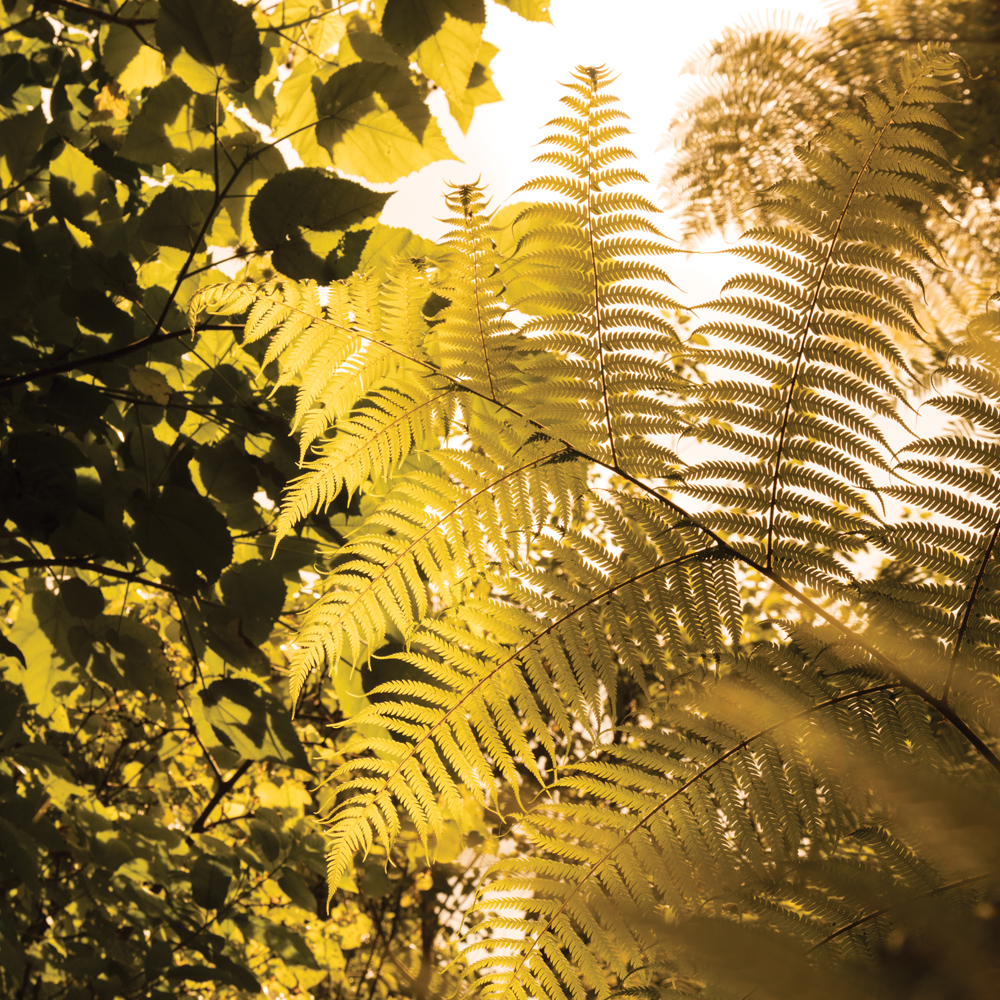Ko·mo·re·bi | /ko̞mo̞ɾe̞bʲi/

The literal translation of komorebi from Japanese – to the sunlight shining through the trees – poorly reflects this poetic concept. Komorebi evokes the complex interplay of sunlight and shade filtering through the leaves – the enchanting atmosphere of forests and the transcendent experience of being immersed in the natural world. Komorebi can refer to any aspect of filtered forest light from the canopy to the dappled shadow patterns on a forest floor.
It is one of the many Japanese words relating to the appreciation of trees and woodland.
Shinrin-yoku is the meditative practice of forest bathing as an antidote to the stresses of urban life. Hanami is flower viewing, generally of cherry blossoms. Hanafubuki is a literal blizzard of cherry blossoms.
Komorebi is one of those Japanese words often cited as having no equivalent in English, the subtleties that a native Japanese speaker can discern apparently requiring too lengthy an interpretation. However, a number of English language poets have coined words and phrases that at least capture aspects of komorebi. In his poem Fern Hill, Dylan Thomas wrote of “the windfall light” beneath the trees and leaves. In Letters to Malcolm: Chiefly on Prayer, CS Lewis called the beams of sunlight that scatter through the canopy “Godlight”. In his snappily titled poem That Nature is a Heraclitean Fire and of the comfort of the Resurrection, Gerard Manley Hopkins’ penchant for neologisms gifted us the term shivelights for the same phenomenon and the term shadowtackle for the shifting patterns of shade they create on the forest floor.
Introduction Aeolian Alpenglow
Benthos Crepuscular Crispate Crown shyness
Desire lines Dreich Endragoned Edgelands
Frondescence Fumarole Gluggaveður Gossamer
Karst Komorebi Lawrence Long acre
Machair Monkey’s wedding Moonglade
Psithurism Quartz Rakuyou Roaring forties
Snag Soft estate Specular, diffuse and pellucid
Spoondrift Steam fog Swash zone Sylvan